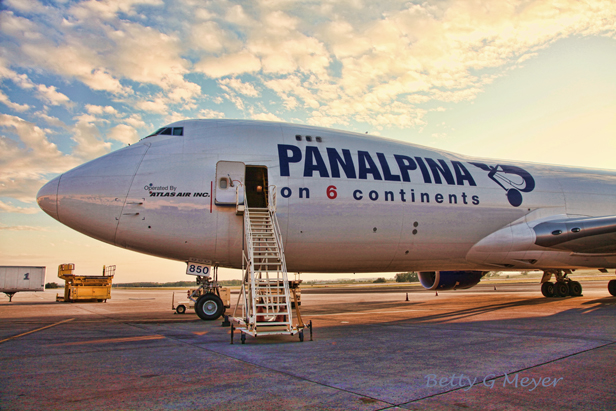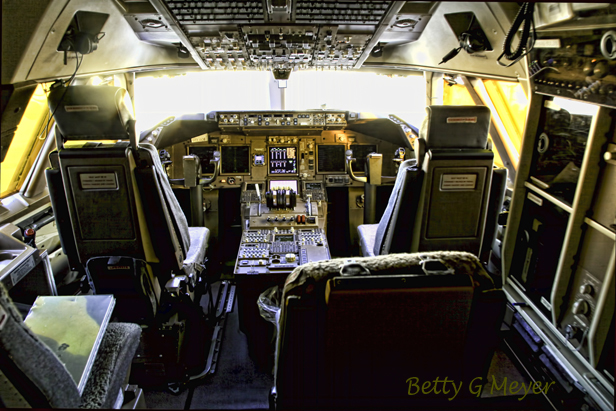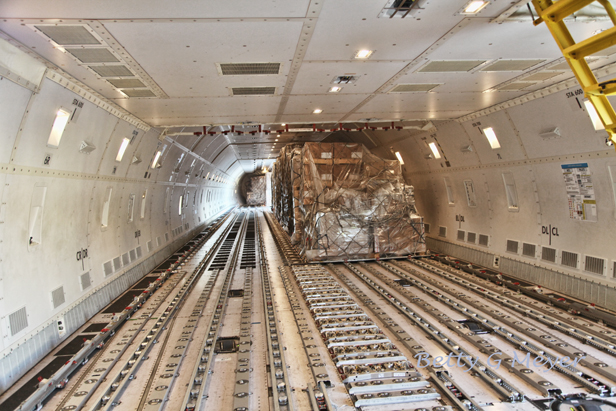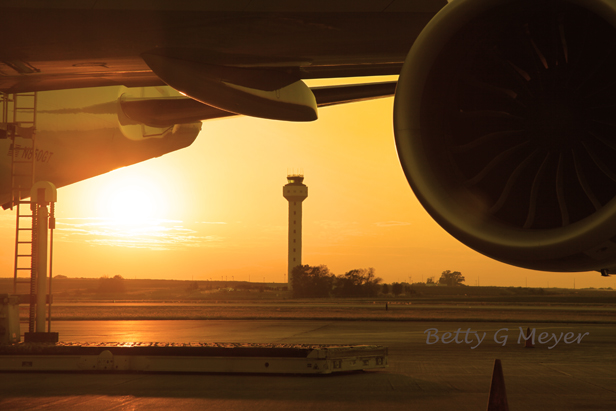HUNTSVILLE ALABAMA- Early this summer the new Boeing 747-8F
planes began replacing the 747- 400s at the Huntsville Airport. Huntsville
International Airport is the smallest airport in the country to receive certification
by the FAA to accommodate the Boeing 747-8F, which is part of the largest
aircraft classification known as Group IV. The 747-8F has a 224-foot, 7-inch
wingspan and measures 250 feet, 2 inches from nose to tail. The new model is
18.3 feet longer and 13 feet wider than the current 747 models, which are
classified as Group V aircraft.

-Panalpina is flying two 747-8Freighters, one in the morning and one in the evening from Huntsville International Airport,. AlabamaAviator image-
After a year of construction, the runway on the west side of the Alabama airport re-opened, looking a little bigger to accommodate the Boeing 747-8F. The Port of Huntsville includes the airport, which ranks No. 14 in the U.S. in international cargo. The $28-million expansion of the west runway and its taxiway system began because of Panalpina, which operates a hub in Huntsville and flies to Europe, Mexico and Asia.

-Boeing 747-8F is equipped with the latest navigation, AlabamaAviator image-
Since Panalpina is such an important partner of the airport, Huntsville has tried to upgrade over the years to match the freight forwarding company's growth. In order to address that change, the 747-8F, Huntsville began a four-phase project to improve its two runways: first work on the west runway, the east runway, the west runway taxiway system and finally the east runway taxiway system. This four-phase runway plan is only Huntsville's latest construction project. In December 2012, the airport spent US$7 million to bring its number of 747 parking positions to 10.

-More main and lower deck postitions with 20 tons more payload, AlabamaAviator image-

-Huntsville International Airport continues to expand as Panalpina grows, AlabamaAviator image-
- 4 extra main deck pallet positions
- 3 extra lower deck pallet positions
- 20 tons more payload
- Double digit percentage improvements in fuel efficiency and CO2 emissions
- Noise footprint reduction by 30%
- General strengthening and incorporation of advanced alloys in fuselage, wing and tail
- New wing design with raked tip (better aerodynamics)
- Larger main deck cargo door for simplified loading (nose-load capability remains)
- Revised flight deck to add new Flight Management Computer, Electronic Checklist, Multifunction Displays
- Airport and ground service compatibility
- Less downtime for maintenance -B Meyer, FMI: http://www.panalpina.com/www/global/en/home.html